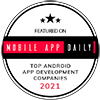In the past few years, the Internet of Things or IoT has made a transformative impact on every industry vertical. This revolution is fueled by the enterprises looking to change the way they transact business and manage operations. Along with Virtual Reality, it became a reality in the last year and it will continue to rule the roost in 2017 as well. The smart and connected devices are serving as the main drivers of this transformational phase. According to a research made by BI Intelligence, it was found that the number of connected devices may rise to 34 billion in 2020 and expenditure on IoT solutions over the same period of time may sum up to $6 trillion. With the development of innovative hardware to support this technology, this year will unleash its potential to the optimum. The top IoT trends for 2017 may be:
IoT in Omni-channel Retail:
The businesses have already felt the influence of IoT in their management practices and marketing. In fact, the latter will be transformed largely by this technology. The convergence of the physical world and digital spaces is evidently seen across the channels. The omnichannel approach in retail marketing focuses on customer behaviors more comprehensively. There will be increased usage of beacons, sensors, and digitization for managing interactions with customers at every touchpoint. Connected shopping experiences will become possible with IoT devices.
Smarter APIs Will Emerge:
If an enterprise is looking to tap the potential of IoT, It needs to implement stronger and smarter APIs or Application Programming Interfaces. These interfaces connect the data with IoT to create an authoritative network. It can enable connectivity for multiple devices and unravel unforeseen possibilities in this domain. In 2017, the empowerment of IoT will largely rely on smart APIs having strong cognitive capabilities for enhanced performances.
IoT in Smart Industries:
In the year 2017, a major impact of IoT will be witnessed in the industrial sector with increasing investments in this technology and mobile app development. From smart machine operations to smart agriculture and smart lighting, you may experience a lot of changes occurring in this sector. Remote monitoring of processes and equipment will become easier with IoT devices integration. With VR or Virtual Reality, IoT can be deployed in industrial settings for operational efficiency and safer monitoring of remote equipment or robots.
Consumer IoT for Smart Devices:
When the Internet of Things was conceptualized years ago, there was a ferocious competition in the IT sector to develop connected products even if they served no purpose at all. Hopefully, this trend will change in 2017 and we’ll witness more rational offerings from the manufacturers. They need to understand that consumers need products that truly solve complex problems and simplify their life. When they develop such products, it is imperative to explain their merits as well to the users.
IoT and Security Concerns:
Despite gaining traction in almost every industry and sector, IoT is still plagued by its security vulnerabilities. There have been some niggling incidents of a security breach in IoT environments. With an increasing number of connected devices, the Internet of Things needs a multilayered approach to fix the security issues. It includes the development of robust and secure interoperability features through IoT app development. Perhaps, the governments will rise to the occasion and take stringent actions ensuring the security of this realm.
IoT in the Healthcare Sector:
The true potential of IoT can be harnessed in the healthcare sector where connected devices can largely improve patient care. It can be extremely beneficial for those affected by chronic diseases. The data collected in this sector will lead to preventative care and monitoring. However, the authentication of technology and its secure operation will still remain a matter of concern for the IT managers and clinicians. These issues can be mitigated by integrating contextual authorization in the healthcare systems.
Conclusion
Apart from these, IoT has unexplored possibilities in industries like travel, electricity distribution, and cashless payments. However, the Internet of Things has its share of challenges as well. A lack of interoperability is the primary issue confronting it. Also, undefined standards can stymie this industry. App developers and IT decision-makers are striving to resolve these issues with an innovative approach and streamlined development processes. Despite these issues, we can expect IoT will make rapid strides in the right direction in 2017.














